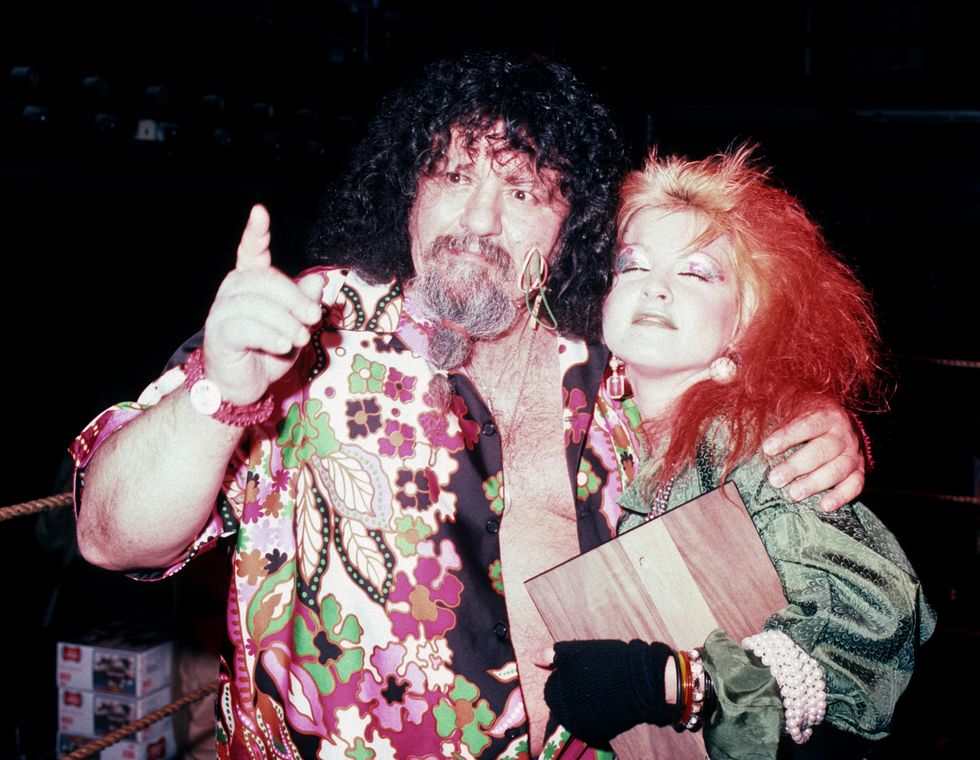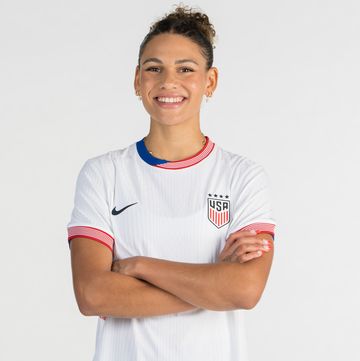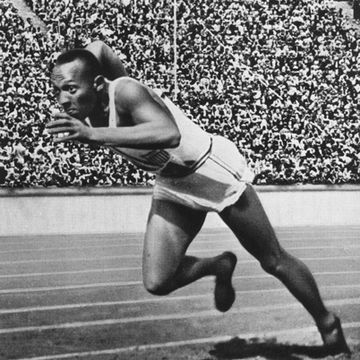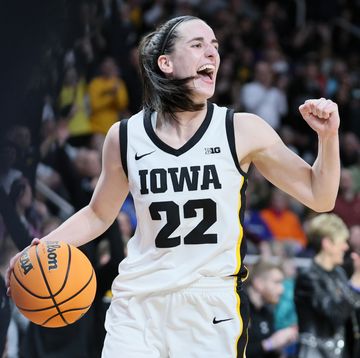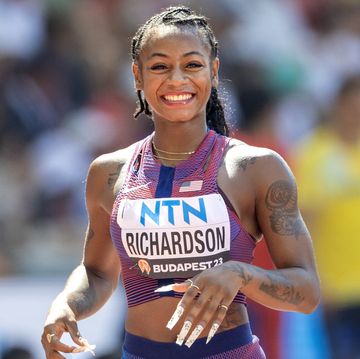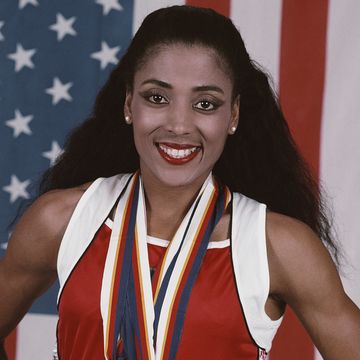The early-to-mid-1980s gave birth to the rise of a new youth culture, an unabashed day-glo celebration that followed the doldrums of the late 1970s. Of the many new phenomena that emerged in that time, two acronyms, in particular, made a splash for their loud appeal to a new generation of young people: MTV and the WWE.
Both music videos and modern American professional wrestling had existed for decades, but MTV and the WWE revolutionized both of them, taking them to the masses with a colorful flourish on cable TV. And while they weren’t officially linked in any way during their first few years — MTV launched in 1981, the modern incarnation of the WWE in 1982 — it wasn’t long until they intertwined and propelled one another to the next level.
The crossover officially began in 1983 with pop star Cyndi Lauper’s music video for her hit song “Girls Just Want to Have Fun.” Playing a, well, teenage girl who just wanted to have fun, Lauper galavanted across New York City in between scenes of her parents lecturing her about her caution-to-the-wind lifestyle. Her burly, bearded father was played by Captain Lou Albano, a veteran WWE star who had become a “manager” of other wrestlers at that point.
It began when Lauper met Albano on a plane
Albano’s involvement in the video was the result of fate and fanaticism, beginning with him meeting Lauper on a plane back from Puerto Rico prior to her breakout success. He left an impression and when it was time to cast the “Girls Just Want to Have Fun” video, Lauper and her then-boyfriend/manager, Dave Wolff, an avid wrestling fan since childhood, knew they wanted Albano involved.
“It would be an amazing thing — it would be funny, it would be camp, it would totally fit into the comedy of the video,” Wolff later remembered. “The producer of the video was a guy named Ken Walz, he had a relationship with Vince McMahon. At this point, I didn’t know anybody in wrestling. When I learned that Ken knew Vince McMahon, I said to do whatever you’ve got to do to give us Captain Lou for this video.”
Lauper recalled it a bit differently in her memoir, writing that “originally they wanted the wrestler Gorgeous George to be in the video, but I said, 'No, Captain Lou's the one.' I had kept in touch with him and had his number, so Dave called him and he signed up immediately."
Regardless of how it happened, Albano’s appearance was far from a one-and-done cameo. Lauper showed off some of her own wrestling prowess in the video, gracefully hammer locking her “dad” against the wall during one of his lectures, and soon, she was actually appearing in a WWE broadcast. In June 1984, she served as a guest on the "Piper’s Pit's" in-show segment during a telecast of Championship Wrestling, where she discussed her rise to fame with the kilted host, "Rowdy" Roddy Piper.
A new storyline was born: When Lauper told Piper that she loved Albano but he wasn’t responsible for her success, the wrestler dropped in on the set and began taking credit for making her a superstar and claimed to have written the words for her hit song “Time After Time.” Then, he started insisting that women “ought to be barefoot in the kitchen” and kept cranking it up from there until Lauper flipped a table and began beating him over the head with her pocketbook.
“She whacked me, hit me over the head with her pocketbook. I didn’t realize that she had a bottle of perfume in there — she almost killed me,” Albano later recalled.
It was a fun moment in the show that blew up in the public eye thanks to Entertainment Tonight’s coverage of the event as a real-life dust-up. And given Wolff’s love for professional wrestling and the fact that exposure to one another’s audiences were mutually beneficial, Lauper continued to play a role in the WWE, with Albano mocking her every chance he could get.
A one-time cameo became a long-running collaboration
Lauper by that time was an MTV darling, with her videos for “Girls Just Want to Have Fun” and other songs proving big hits on the network. Her record label saw the potential gold in the continued crossover and MTV agreed to air a WWE special that centered on the new rivalry, which was a giant coup for the burgeoning wrestling promotion. Wolff began appearing on WWE broadcasts as well, filling in for Lauper and getting his own storyline as a rival to Albano.
The event, the first entry into a series called “Rock ‘n’ Wrestling” and dubbed “The Brawl to End It All,” took place at Madison Square Garden and aired on July 23, 1984. Instead of wrestling, Lauper “managed” a newer women’s wrestler named Wendi Richter, who was matched up against a legendary star named The Fabulous Moolah, who had Albano in her corner. MTV went all-out to promote the event, which included 11 matches but only one that aired on TV.
The wild fracas, which again saw Lauper hit Albano with her pocketbook — the move was thusly minted the “Loaded Purse of Doom” — ultimately ended with a Richter victory, which minted her the first new Women’s Champion in nearly 30 years. More importantly, it was a massive success, earning a 9.0 share in the Nielson ratings, the highest-rated MTV broadcast to that point.
Obviously, all sides wanted more, so they had to evolve the story. In December of that year, Lauper returned to MSG to bury the hatchet with Albano, who appeared in the ring as Dick Clark presented her with a gold record in honor of her work on behalf of women’s rights. They became fictional friends as well as real ones, and all seemed hunky-dory until Piper, who had kept his own rivalry with Lauper going, crashed the ceremony and began beating down on both Albano and Lauper.
Luckily, Hulk Hogan, one WWE’s biggest stars at that time, just so happened to be in the ring at that moment and stepped in to clobber his rival, Piper. Another friendship was born and the gimmick continued, first at the February Rock ‘n’ Wrestling sequel called the “War to Settle the Score,” where Hogan, with Lauper in his corner, defended his WWE Heavyweight title against Piper.
The next month marked the zenith of Lauper’s time with the WWE. McMahon risked it all on a novel concept, the promotion’s first pay-per-view event called WrestleMania. It was filled with celebrity cameos, including Mr. T, Muhammad Ali and Liberace, and Lauper served as both a special guest and part of the plot. Lauper again managed Hogan, who again defended his WWE title, this time in front of four million PPV subscribers. It was a massive success, launching WWE into the stratosphere.
Lauper continued working with the WWE for the next few years, promoting a Saturday morning cartoon show for her pal Hogan and appearing in perhaps the world’s campiest record of all-time, 1985’s The Wrestling Album. She also brought Hogan as her “bodyguard” to the Grammy Awards in June 1985, where she won Best New Artist.

